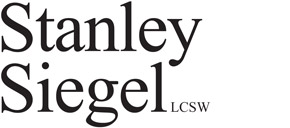During the mid- 1990âs I served as Dance Editor for Showbusiness and wrote weekly dance reviews and reported on the dance scene in New York City
The Merce Cunningham Dance Company
âPolarityâ (1990)
âNeighborsâ (1991)
âTrackersâ (1991)
By Stanley R. Siegel
April 3, 1991
Merce Cunningham celebrates nature with his dances. Not in the literal sense that generally springs to mind when we think about natureâs beautifully formed universe, but for the way nature endlessly creates itself. Cunninghamâs dances are events that mimic natureâs grammar; there are no beginnings or ends, only middles punctuated by evolving and disintegrating patterns and shapes that are never exactly repeated or resolved.
Polarity first performed in 1990, discusses natureâs opposites, not by presenting static images, but by demonstrating the dynamics of natureâs extremes. Cunningham manipulates line and shape, slows and freezes movement in one segment of his universe, while in another, he shatters synchronistic or symmetrical patterns and replaces them at random with jarring spastic images. Set against a musical background that Cunningham chooses not to interpret, the elements and their interplay describe natureâs paradoxes; the serene and the chaotic, the patterned and the mutating, and inevitably, the momentary relevance of all events.
Cunningham means his dances to be experienced. Non-narrative and non-emotional, they are objective commentaries. They reflect the unpredictable process of change. In Neighbors, he describes human relationships with mechanistic and robotic movements. But as the experience unfolds, what appeared dehumanizing at first impression, evolves into an ode to the wonderful disorder of change. Relationships shift in an instant from harmonious to conflictual, or like cells, divide without notice. Alienated partners meander into the range of new neighbors. They cling to or shy from each other. Some connections hold semenax sperm pills fast, others lose steam and some never become. No relationship remains static, but the disruptions, rejections and betrayals are unencumbered by the emotions we would have every right to expect. Instead, Cunningham shows a photocopy of the systemic whole where the joinings and separations of our lives simply are.
Where Polarity and Neighbors celebrate nature, the computer generated choreography of Trackers, recognizes the structure of the old classicism. Tiny variations are danced throughout, one folding into another, then ending in a larger group movement. The repetition of balletic steps, including various beats and turns, suggest a formality absent in the other works.
There are also references to more contemporary ballet images. Bodies are carefully fitted to form architectural constructions in which the dancers appear as interchangeable parts, each cooperating towards the order and stability of the whole. Uncharacteristic of Cunninghamâs choreography, these coherent structures periodically toil across the foreground, seeming to leave behind an after image for the viewer to remember.
Cunningham has never intended his dances to be viewer-friendly. Yet, the combined elements of this dance; architecture and classicism, provide a familiar experience. When presented against the arbitrariness and deconstruction of elements in Polarity and Neighbors, the technologically generated Trackers, is ironically, the friendlier piece.
Did computer choreography give Cunningham enough perspective from his own creation to shift his usual aesthetic? In Trackers, he appears on stage, his aging image a familiar reminder: Regardless of advancing technology, we are always at natureâs mercy. Technology seeks to organize what nature so loves to disrupt. Because Trackers acknowledges formality and order, from which Cunningham has always defiantly rebelled, it possess the possibility that computer technology could lead him, perhaps unwittingly, away from his own naturalistic aesthetic.




